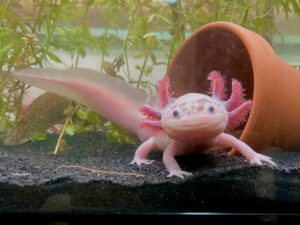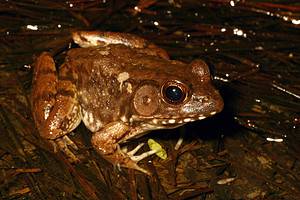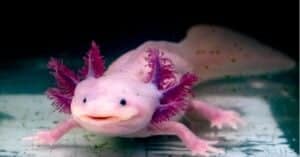Frogs are amphibians, which means they are cold-blooded, and they spend time both on land and in water. A few can thrive in just one of these environments, but generally, both environments must be present as they need moisture to live.
Small frogs are on every continent except Antarctica, and it’s believed that there are a good number of tiny frogs that are yet to be discovered because they hide so well from observers. The smallest frog in the world averages at .3 inches long while the largest frogs can weigh 7 pounds.
Generally, a small frog kept as a pet can live in an enclosure that’s about 20 gallons. Any enclosure bigger than that and the frog is no longer considered small. Most frogs are carnivores that eat whenever the opportunity arises. As tadpoles, they consume plant matter.
So, how do these little cuties feed themselves? In this article, we’ll look at what small frogs eat.
What Do Small Frogs Eat?
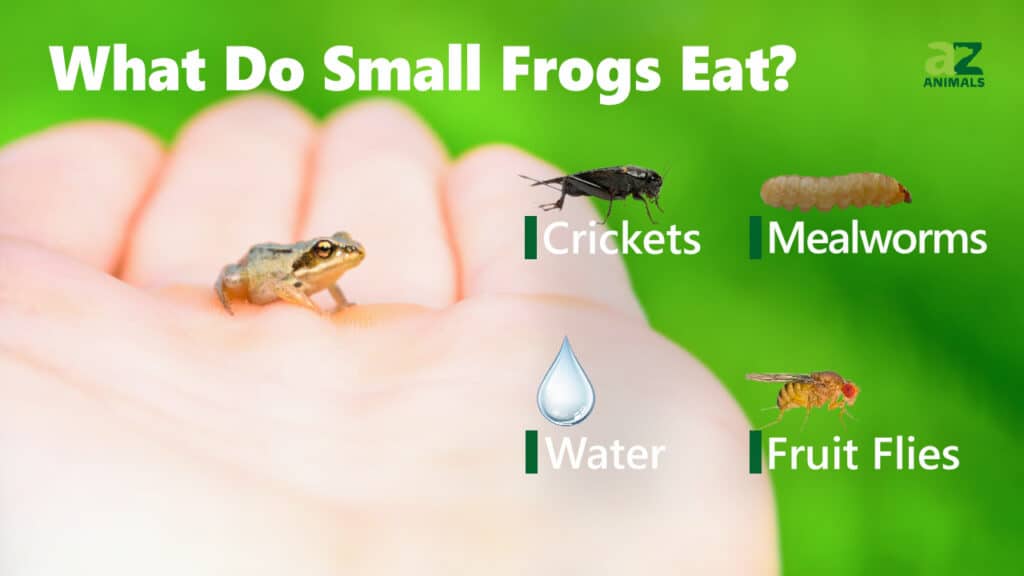
Small frogs are carnivores who eat a diet that includes mealworms, fruit flies, and crickets. They’ll also eat small aquatic animals like bloodworms and mosquito larvae if presented the chance. Frogs are not scavengers and will only eat things that are alive and moving. That’s why frogs can’t be fed dead food or pellets.
Below is a list of foods small frogs eat:
- Springtails
- Ants
- Aphids
- Beetles
- Moths
- Gnats
- Fruit Flies
- Mosquito Larvae
- Pinhead Crickets
- Bloodworms
- Mites
- Spiders
- Termites
Frogs eat their own skin as it sheds about once every week, though this can vary between species. Frogs rely on their skin to be soft so that oxygen can pass through it while in the water, allowing them to breathe. There are important proteins in the skin that are valuable to a frog’s diet, so the skin isn’t wasted when it’s time to slough it off.
Frogs also eat at night because it’s usually more humid from evening to dawn, which they need so their skin stays moist. Anyone that has lived next to a woodland or that has a pond in their backyard knows that the frog cacophony usually starts up when the sun goes down.
How Do Small Frogs Hunt?
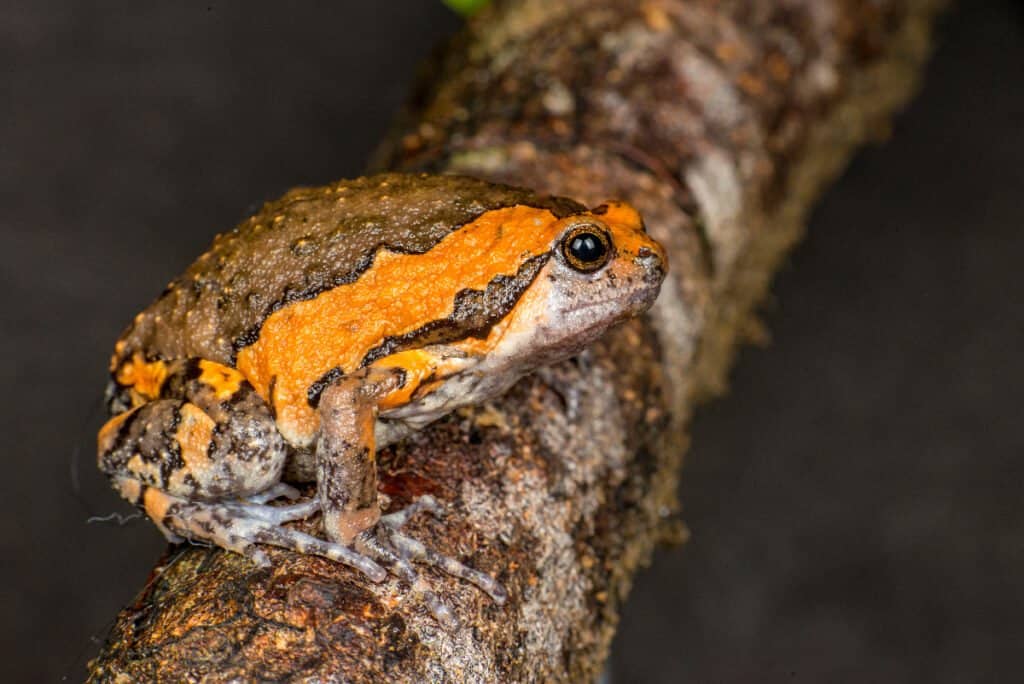
Small frogs rely on their sense of touch to locate their prey.
©Muhammad Naaim/Shutterstock.com
Small frogs hunt by hiding until they can pounce on something. They shoot their sticky tongue at their prey and then pull the insect into their mouth. Since frogs generally only have teeth on their upper jaw, they swallow their prey whole. Once the prey is inside them, small frogs suffocate what they’ve eaten in their stomachs.
Their teeth hold the prey in place long enough for them to use their eyeballs against the roof of their mouth. The eyeballs push down which forces the entire insect down its throat at one time.
Small frogs can’t see something near them very well, but they have great night vision and can see over long distances. They’re solitary hunters and don’t come together in groups unless it’s time to mate. Like their bigger counterparts, small frogs hunt at night because the dark helps hide them from their many predators.
Small frogs rely on their highly tuned sense of touch to locate their prey. Their skin is specially designed to feel vibrations in the air or water, and they also possess a keen sense of taste.
What Do Baby Small Frogs Eat?
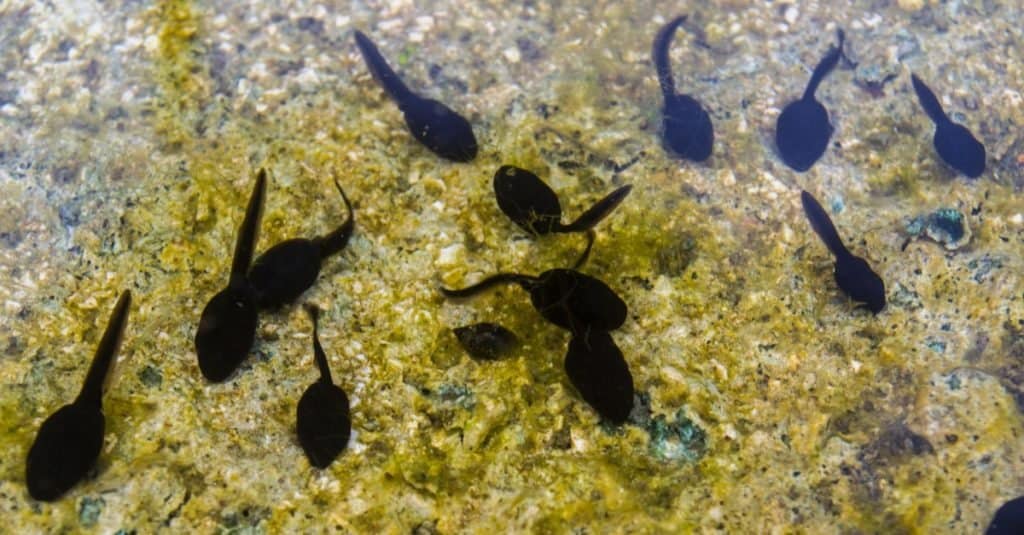
Tadpoles eat moss and algae.
©filippo giuliani/Shutterstock.com
Baby frogs are tadpoles, and these tadpoles undergo a metamorphosis from a slender swimming organism into the bright leaping animal we think of when we hear “frog.” A tadpole eats plant-based foods like algae, moss, and duckweed.
It usually takes anywhere from 9-12 weeks for a tadpole to turn into a tiny froglet. A froglet is a frog that still has a bit of its tadpole tail. It becomes a full-blown frog in 12-16 weeks. Since small frogs are cold-blooded, this process can be slowed down based on what season it is.
When a tadpole hatches, it has an herbivorous diet which later becomes carnivorous. A tadpole solely eats things like algae after it has used up its egg sac. As it grows a bit more, it becomes omnivorous. Tadpoles are voracious eaters because their metabolism is super high as they quickly grow up. Because of this, a bigger tadpole will even make a snack out of a smaller tadpole which is bad news for the small frog community.
Once a tadpole turns into a frog, it’ll eat things on the adult menu stated above. Keep in mind, however, that it’ll only eat what fits into its mouth. This means baby small frogs might only eat the smallest things like aphids.
Do Small Frogs Have Predators?
Yes, small frogs have a lot of predators like reptiles, birds, mammals, snakes, and large frogs. They’re on other animals’ menus so often that most frogs are eaten as tadpoles.
Humans eat frogs as well. While most people are familiar with the large frog legs sold at grocery stores that are usually deep-fried, certain small frogs can be cooked and eaten whole. They cannot be eaten raw because they often contain parasites and bacteria that are harmful to humans.
What Do Pet Small Frogs Eat?
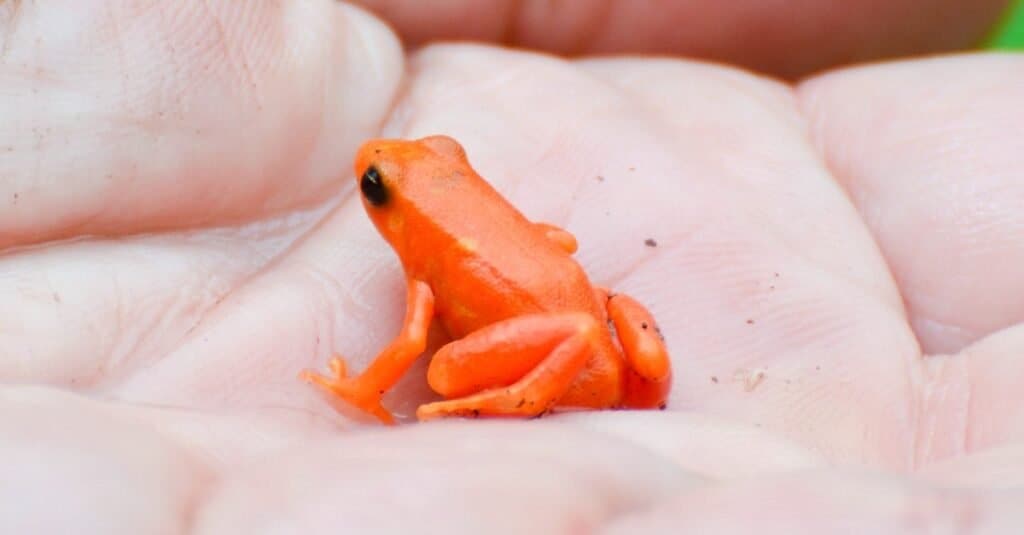
Pet small frogs eat bloodworms, brine shrimp, and wingless fruit flies.
©iStock.com/dr322
A pet small frog eats bloodworms, brine shrimp, and wingless fruit flies. As a tadpole, it will eat fish food and algae wafers. Frogs in captivity need a calcium supplement since it will be lacking in the food choices you present.
Make sure that the food you’re purchasing for your pet is about the size of the distance between the frog’s two eyes. Gut-loaded insects are preferred. Calcium is usually dusted on the outside of the gut-loaded prey for the frog’s consumption.
Adult frogs will need to be fed once every 2-3 days while baby frogs will need to be fed twice per day. Do not feed a frog any vegetables or fruit. This can cause serious health problems that lead to death.
How Do You Care for a Small Frog?
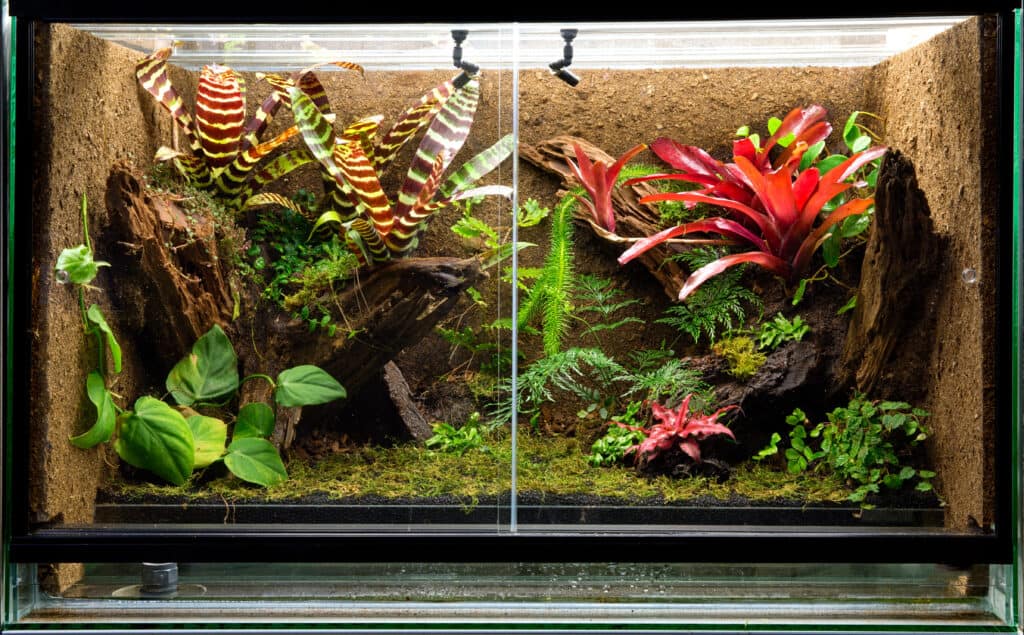
Getting creative in designing your pet frog’s terrarium can result in one very happy frog!
©Dirk Ercken/Shutterstock.com
There’s more to caring for a pet small frog than feeding it properly. Besides its diet, a frog will need a 10-20 gallon enclosure, and depending on the species, you may need to go for more vertical than horizontal space. The terrarium will need a substrate such as damp peat moss, sphagnum moss, topsoil, or coconut husk.
Creating a natural habitat will give your frog an enjoyable environment to thrive in. You can decorate with live or fake plants, driftwood, bark, branches, hide boxes, or other natural items. And most frog species will need a heat lamp. You’ll need to research the requirements depending on the species you own and be aware that too much heat can kill a frog, as its need for it is not as great as that of some reptile species. UV exposure is also an important consideration for your miny amphibian.
The photo featured at the top of this post is © iStock.com/dr322
Thank you for reading! Have some feedback for us? Contact the AZ Animals editorial team.



